Ghanshyam Singh
Classification of COVID-19 on chest X-Ray images using Deep Learning model with Histogram Equalization and Lungs Segmentation
Dec 05, 2021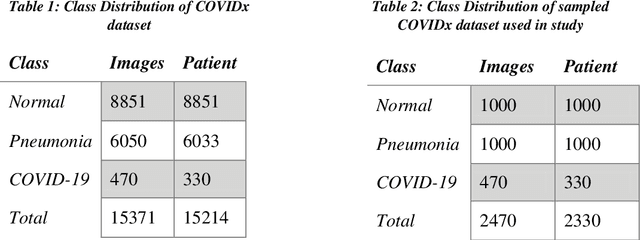
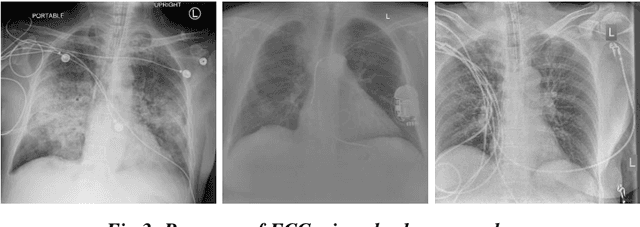
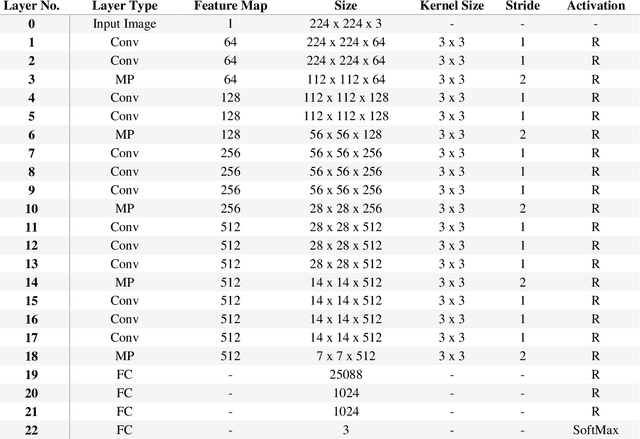
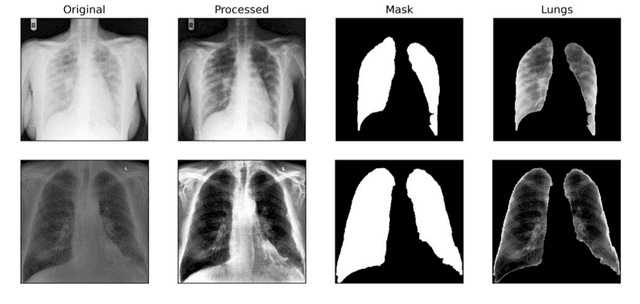
Abstract:Background and Objective: Artificial intelligence (AI) methods coupled with biomedical analysis has a critical role during pandemics as it helps to release the overwhelming pressure from healthcare systems and physicians. As the ongoing COVID-19 crisis worsens in countries having dense populations and inadequate testing kits like Brazil and India, radiological imaging can act as an important diagnostic tool to accurately classify covid-19 patients and prescribe the necessary treatment in due time. With this motivation, we present our study based on deep learning architecture for detecting covid-19 infected lungs using chest X-rays. Dataset: We collected a total of 2470 images for three different class labels, namely, healthy lungs, ordinary pneumonia, and covid-19 infected pneumonia, out of which 470 X-ray images belong to the covid-19 category. Methods: We first pre-process all the images using histogram equalization techniques and segment them using U-net architecture. VGG-16 network is then used for feature extraction from the pre-processed images which is further sampled by SMOTE oversampling technique to achieve a balanced dataset. Finally, the class-balanced features are classified using a support vector machine (SVM) classifier with 10-fold cross-validation and the accuracy is evaluated. Result and Conclusion: Our novel approach combining well-known pre-processing techniques, feature extraction methods, and dataset balancing method, lead us to an outstanding rate of recognition of 98% for COVID-19 images over a dataset of 2470 X-ray images. Our model is therefore fit to be utilized in healthcare facilities for screening purposes.
Comparison of Traditional and Hybrid Time Series Models for Forecasting COVID-19 Cases
May 05, 2021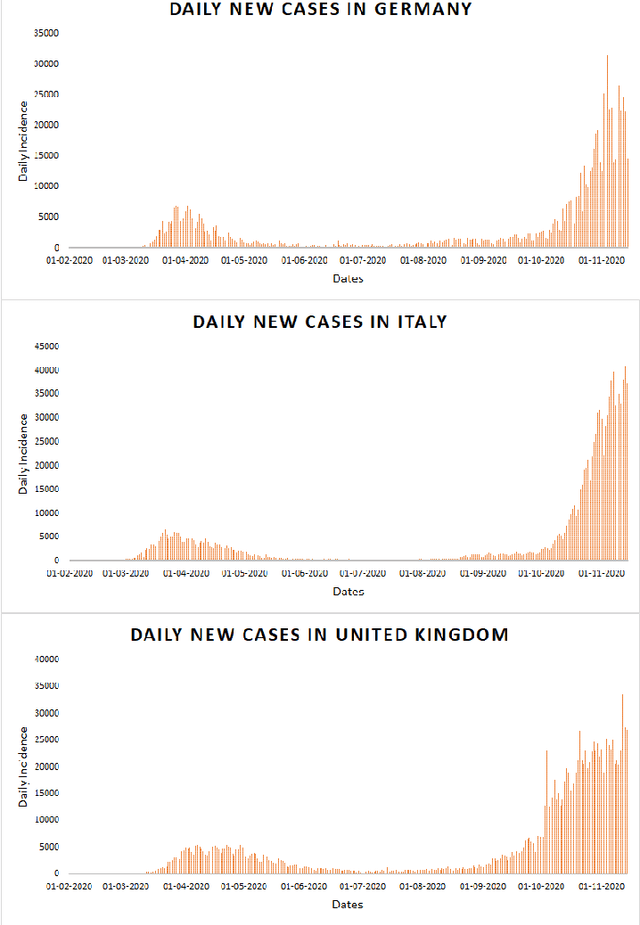
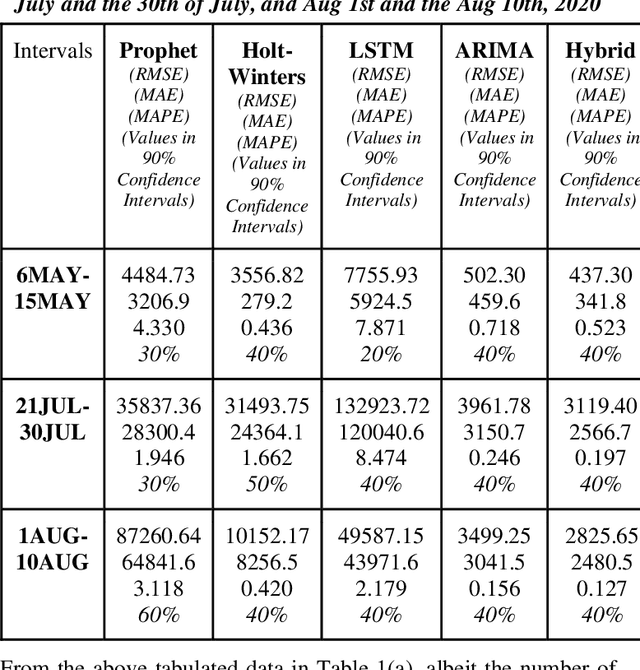
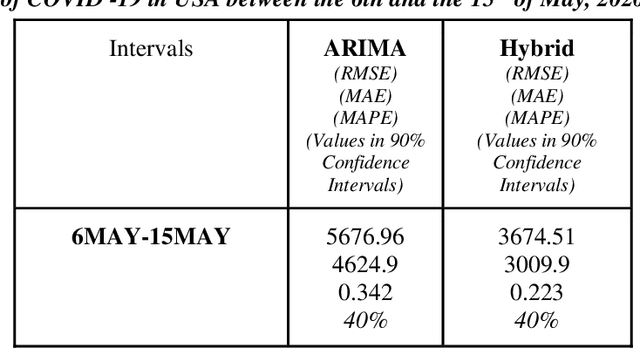

Abstract:Time series forecasting methods play critical role in estimating the spread of an epidemic. The coronavirus outbreak of December 2019 has already infected millions all over the world and continues to spread on. Just when the curve of the outbreak had started to flatten, many countries have again started to witness a rise in cases which is now being referred as the 2nd wave of the pandemic. A thorough analysis of time-series forecasting models is therefore required to equip state authorities and health officials with immediate strategies for future times. This aims of the study are three-fold: (a) To model the overall trend of the spread; (b) To generate a short-term forecast of 10 days in countries with the highest incidence of confirmed cases (USA, India and Brazil); (c) To quantitatively determine the algorithm that is best suited for precise modelling of the linear and non-linear features of the time series. The comparison of forecasting models for the total cumulative cases of each country is carried out by comparing the reported data and the predicted value, and then ranking the algorithms (Prophet, Holt-Winters, LSTM, ARIMA, and ARIMA-NARNN) based on their RMSE, MAE and MAPE values. The hybrid combination of ARIMA and NARNN (Nonlinear Auto-Regression Neural Network) gave the best result among the selected models with a reduced RMSE, which proved to be almost 35.3% better than one of the most prevalent method of time-series prediction (ARIMA). The results demonstrated the efficacy of the hybrid implementation of the ARIMA-NARNN model over other forecasting methods such as Prophet, Holt Winters, LSTM, and the ARIMA model in encapsulating the linear as well as non-linear patterns of the epidemical datasets.
 Add to Chrome
Add to Chrome Add to Firefox
Add to Firefox Add to Edge
Add to Edge